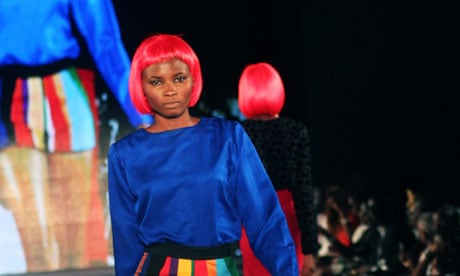The 28th biannual London fashion week drew to a close yesterday. Mere mortal city dwellers breathed a sigh of relief and waved goodbye to the planes of models moving on to subsequent fashion weeks in Milan and then Paris.
Twice a year, the "big four" fashion capitals bestow upon the western world the trends of the coming season, thereby dictating the next slew of outfits worth bankrupting yourself for. Nothing new there. But for the remaining 50 weeks of the year, beneath the radar of mainstream fashion press, other, lesser-known fashion weeks take place in countries on every continent.
Over the past couple of years, I've attended many "alternative" landmark fashion weeks, including the first ever in Islamabad and Cambodia, events in Lagos and Kingston, Jamaica, and even one in New York purely for the full-figured. Indeed, the first ever Congo fashion week begins this Friday in Kinshasa. There are vibrant, burgeoning fashion scenes in almost every country you can think of, and it's important we stop overlooking them.
But it's not the clothes, trends or front rows that I've found most compelling about these "other" fashion weeks. It's the brilliant cultural idiosyncrasies. At fashion weeks in Nigeria and Cambodia the level of creativity represented in some of the designs rivalled anything I've seen come out of Central Saint Martins, and yet my favourite designers there were self-taught and had had limited access to fashion magazines. In Rio, Brazil, the fashion week seemed to represent a microcosm of Rio society, reflected in the use of transgender models on the catwalk. Rio is a famously tolerant city and popular LGBT tourist destination. Its fashion industry stands out because of its capacity for embracing marginality.
My time at these fashion events has also confirmed something to me that may sound trite: everywhere in the world, what fashion really boils down to is women. Not only in terms of the tremendous amount of pressure we withstand in pursuit of often unrealistic image goals, but the validation we get from fashion. The voluptuous models of full-figured fashion week took the New York fashion week template, squeezed into it and broke the mould, to riotous applause. Perhaps fashion weeks, events that historically have accusations of exploitation levelled against them, can and should represent a moment of empowerment for women.
That said, most fashion weeks want to appeal to an international buying market, and often this means pandering to a globalised perception of beauty. In South Korea this expressed itself in a particularly disturbing way. Many young women, but especially models, are opting for "double eyelid" surgery, a procedure that effectively westernises the appearance.
As the global fashion industry grows, there will come a time when the powerhouses expand beyond the "big four". There is a wonderful potential emerging to develop fashion as a real cross-cultural language. But for this to happen it is important that fledgling fashion scenes don't lose sight of their own cultural heritages and identities in a quest to emulate the west. I want to keep being surprised by the uniqueness to be found outside Europe and the US.
